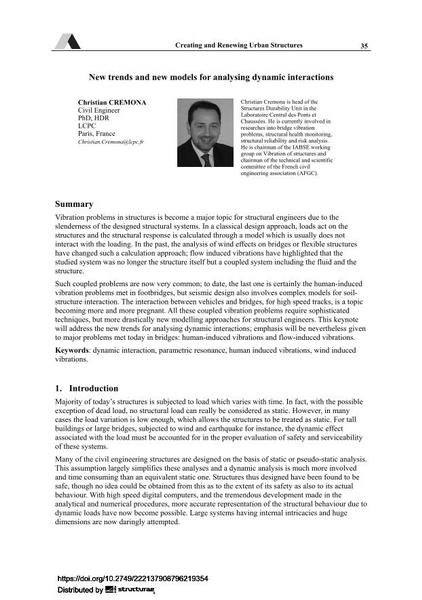New trends and new models for analysing dynamic interactions

|
|
|||||||||||
Détails bibliographiques
| Auteur(s): |
Christian Crémona
|
||||
|---|---|---|---|---|---|
| Médium: | papier de conférence | ||||
| Langue(s): | anglais | ||||
| Conférence: | 17th IABSE Congress: Creating and Renewing Urban Structures – Tall Buildings, Bridges and Infrastructure, Chicago, USA, 17-19 September 2008 | ||||
| Publié dans: | IABSE Congress Chicago 2008 | ||||
|
|||||
| Page(s): | 35-63 | ||||
| Nombre total de pages (du PDF): | 28 | ||||
| Année: | 2008 | ||||
| DOI: | 10.2749/222137908796219354 | ||||
| Abstrait: |
Vibration problems in structures is become a major topic for structural engineers due to the slenderness of the designed structural systems. In a classical design approach, loads act on the structures and the structural response is calculated through a model which is usually does not interact with the loading. In the past, the analysis of wind effects on bridges or flexible structures have changed such a calculation approach; flow induced vibrations have highlighted that the studied system was no longer the structure itself but a coupled system including the fluid and the structure. Such coupled problems are now very common; to date, the last one is certainly the human-induced vibration problems met in footbridges, but seismic design also involves complex models for soil- structure interaction. The interaction between vehicles and bridges, for high speed tracks, is a topic becoming more and more pregnant. All these coupled vibration problems require sophisticated techniques, but more drastically new modelling approaches for structural engineers. This keynote will address the new trends for analysing dynamic interactions; emphasis will be nevertheless given to major problems met today in bridges: human-induced vibrations and flow-induced vibrations. |
||||
